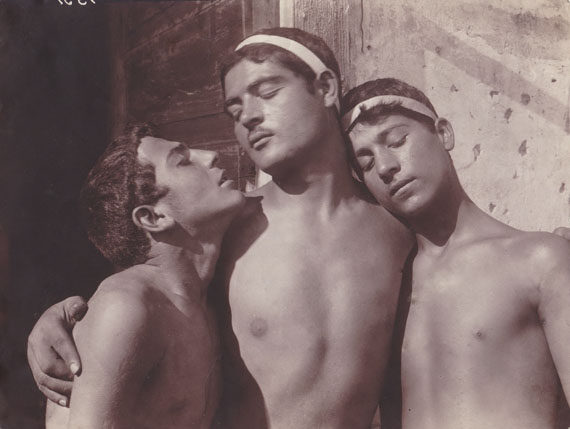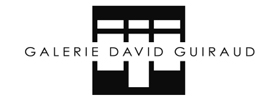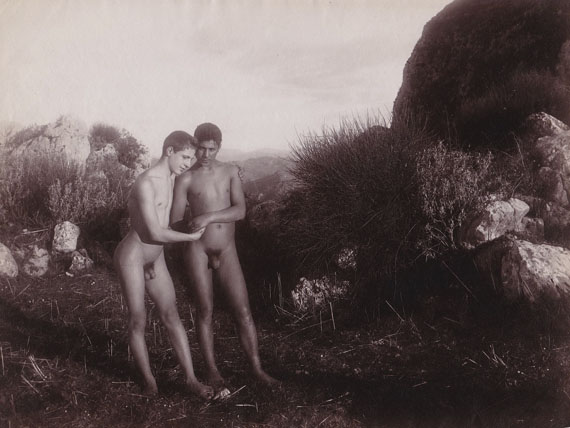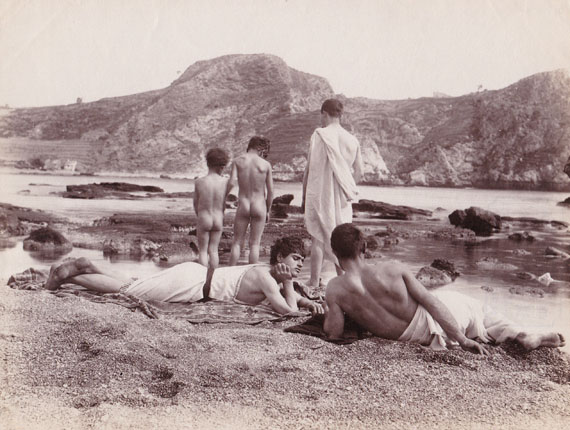
The Arcadian Shepherds
Les bergers d'Arcadie
Vincenzo Galdi » Wilhelm (Guglielmo) (von) Plüschow » Wilhelm von Gloeden »
Exhibition: 10 Mar – 13 May 2017

Galerie David Guiraud
5, rue du Perche
75003 Paris
+33 01-42717862
dgphotographies@orange.fr
www.galerie-david-guiraud.com
Tue-Sat 14:30-19

"The Arcadian Shepherds"
Wilhelm Von Gloeden / Guglielmo Plüschow / Vincenzo Galdi
Exhibition: 10 March - 13 May, 2017
Opening: Thursday, 9 March, 5pm
Galerie David Guiraud is proud to present, with the complicity of baudoin lebon, an exceptional collection of photographs by Wilhem Von Gloeden, Guglielmo Plüschow and Vincenzo Galdi, recently found in the archives of the Galerie Texbraun, in Paris.
• Pioneers in the history of photography
Two expatriated German aristocrats in Italy and a young Italian model, initiated to the art of photography, these are the pioneers of the masculine and homo-erotic photography at the turn of the 19th and the 20th century. The images by Von Gloeden and Plüschow have deeply influenced the history of photography, they are marked by their knowledge of greek and roman antiquity. The authors set their first models in archeological sites and immortalised sublimes mediterranean skies and landscapes, settings of heroic stories. The male nudes that they made wore ephebe’s accessories, aureoled with flowers and dressed with unchaste clothes, which all evoke the texts by Virgile and the Idylles by Théocrite. The models are young workers from Rome or peasants and fishermen from Sicily. It is the first oeuvre exclusively devoted to male nudes (portraits, nudes and outside compositions).
• A sulphurous work
The erotic character of some of the photographs seems founded if we look at them with our modern eyes and it is surprising that it did not shock at the time they were made. A strong knowledge of antiquity allowed, without of doubt, to approach these images differently back then, but today nudes appear to us as the only way to read the photographs of our pioneers. Many models are minors, naked, taken upfront and full body. It is recommended to inform the public on this point and not to allow children under 18 to access the exhibition.
• Galerie Texbraun
This collection was found by in the archives of the Galerie Texbraun’s heirs, which was one of the first gallery to open in the 1970’s in Paris. Founded by Hughes Autexier and François Braunschweig, the gallery participated in the acknowledgement of the French primitive photography and of the early 20th century American photography. This amazing group, gathered in the 1970’s or 1980’s, is one of the most attractive collection presented in the market for many years.
�

• An exceptional exhibition
This exhibition is exceptional for a few reasons; First of all by its great number of photographs presented to the public: more than 100 vintage prints on albumin paper, all stamped by the artists, in a 22 x 17 cm size. Secondly, by its exceptional condition and the quality of the prints: They are all fresh with strong tonalities and the albumin papers are in perfect conditions, no foldings, no breaks. They seem like they just left the dark chamber in where the artists made them about a century ago. As often seen in erotic photographs, they suffered from the casualties of time and its mores. Moreover the fascists started destructing these photographs in the 1930’s, which makes the remaining prints extremely rare.
• A scientific publication
The gallery will publish a catalogue which will reproduce the integrality of the images found. It aims to keep the memory of this rare ensemble and to create a useful research tool. For each artist, the prints will be presented following the negative numbers, the colour of the pencils and their locations on the back of the print will be mentioned. The presence and description of the copyright stamp pads and their locations on the back of the paper are also mentioned. Almost all prints are stamped, this will help to classify and authenticate them with certitude. This catalogue will not contradict the errors of attribution which are frequent and distort the reading of the artists’ works.




